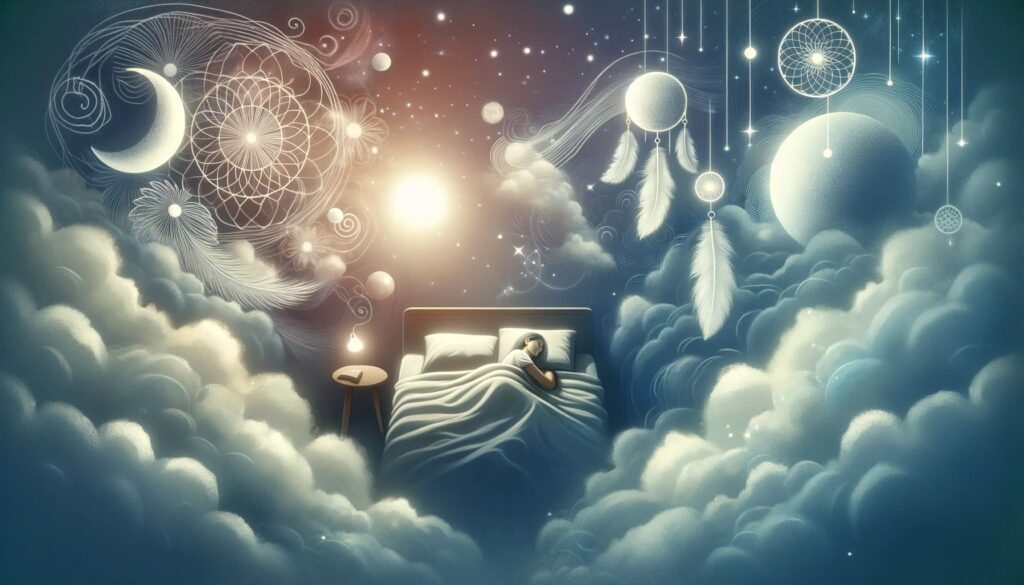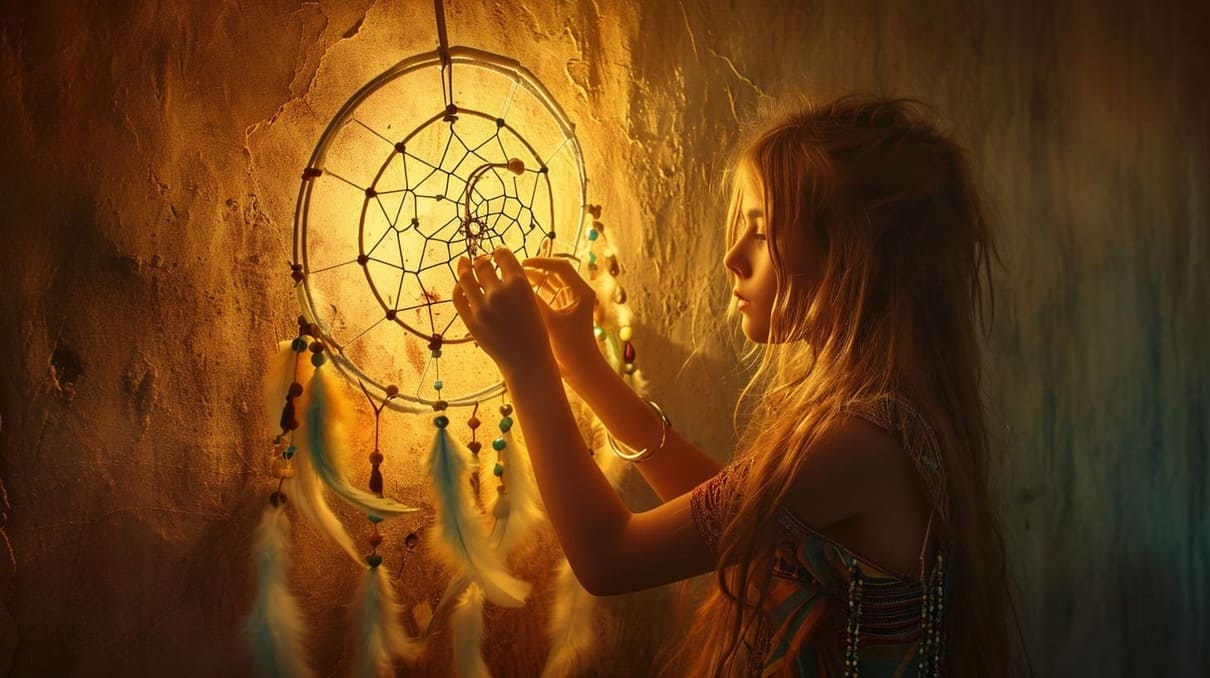Dream catchers, those enigmatic symbols woven into the cultural fabric of Native American tradition, have captured the imaginations and hearts of many around the world. These intricate artifacts, traditionally used to ward off bad dreams and channel good ones into the sleeper's consciousness, present a mesmerizing intersection of myth and spirituality. But what happens when a dream catcher becomes "full"? This enchanting concept invites us to explore the rich tapestry of ancient beliefs and modern interpretations associated with these cultural icons.
Tracing Dream Catcher Origins
The origin of dream catchers is deeply rooted in the traditions of the Ojibwe people, where they were initially known as "spider web charms." These charms, woven by the women of the tribe, embody the protective spirit of Asibikaashi, the Spider Woman. Historically, dream catchers were crafted to protect sleeping children from nightmares and harmful spirits by capturing all negativity in their intricately woven webs.
As these cultural artifacts migrated from their native settings into broader popular culture, their symbolic meanings and constructions evolved. Today, they not only serve as spiritual tools but also as objects of aesthetic value. This blend of historical significance and contemporary usage provides a fascinating narrative:
- Native American Tradition: Spiritual protection and guidance
- Modern Interpretation: Decorative items reflecting spiritual mindfulness
Here's a relevant visual representation of the traditional setting where dream catchers were commonly found:

How Dream Catchers Work
Traditionally, dream catchers function through a specific spiritual mechanism taught by Native American elders. Positioned above the bed, they are believed to act as filters, catching the darker dreams and allowing only the light, positive dreams to slide down the feathers to the sleeper below. This concept is underpinned by an understanding of spiritual and energetic hygiene:
- Catching Bad Dreams: Negative dreams are trapped in the web and destroyed by the first light of morning.
- Allowing Good Dreams: Positive dreams find their way through the center hole and glide gently into the sleeper’s mind.
Dream catchers embody a spiritual balance and serve as a conduit between the cosmos and the earthly realm, reflecting the Ojibwe legend of the Spider Woman who would weave the protective webs.
The Myth of a 'Full' Dream Catcher
Is it possible for a dream catcher to become "full"? This intriguing question has emerged in modern contexts, diverging significantly from traditional Native American views. Traditionally, dream catchers are seen as self-cleansing spiritual tools that are everlasting as long as they are respected and maintained. However, modern myths suggest otherwise:
- Traditional Views: Continuous protection, no concept of being "full"
- Modern Myths: Possibility of saturation with captured dreams or energies, requiring cleansing or resetting
This divergence offers a rich area of exploration, contrasting deeply-held cultural beliefs with contemporary spiritual practices.
Indicators of Dream Catcher's State
Recognizing the status of a dream catcher is subject to a variety of interpretations. While traditional belief does not necessarily accommodate the idea of a "full" dream catcher, modern users often look for physical or energetic signs to gauge their dream catcher’s condition:
- Physical Changes: Wear and tear, dust accumulation might suggest a need for cleaning or replacement.
- Energetic Feel: Some believe a heavier energy might indicate the dream catcher has absorbed many dreams.
These indicators, although widely recognized in popular culture, may not align with the traditional teachings and understanding of Native American communities.
Maintaining the Integrity of Dream Catchers
Maintaining a dream catcher involves both physical care and spiritual respect. Here are ways to preserve the efficacy and sanctity of these sacred artifacts, ensuring they continue to serve their protective role:
- Physical Maintenance: Regularly dusting and gently handling the dream catcher.
- Spiritual Upkeep: Offering smudging ceremonies with sacred herbs like sage to cleanse the space and the dream catcher.
Engaged in thoughtful upkeep, these practices underscore the reverence and value attributed to dream catchers in their originating cultures as well as in modern adaptations. They also highlight the delicate balance between respecting cultural origins and integrating new-age spiritual practices.
This foundation sets the stage for further exploration in the lifespan and interpretations of dream catchers, as we continue to respect and appreciate their cultural and spiritual significance.
The Lifespan of a Dream Catcher
Dream catchers, with their webbed circles and dangling feathers, are not just beautiful artifacts; they're steeped in rich traditions and beliefs. But like all things, their effectiveness is often questioned over time. How long does a dream catcher remain potent? Today, perspectives vary widely across different cultures and individual beliefs.
Exploration of Lifespan Theories
- Continuity in Native American Tradition: For many Native American communities, the dream catcher is believed to retain its power indefinitely, provided it's treated with respect and not physically damaged.
- Modern Adaptations: On the other hand, contemporary interpretations sometimes suggest that dream catchers can lose their efficacy. This might be believed to occur if they accumulate too many trapped negative energies or simply through the natural degradation of materials over time.
Handling Wear and Replacement
When it comes to physical condition, here are two primary considerations:
- Natural Wear: Materials like feathers and leather may degrade. If a dream catcher appears visibly tattered, it might be seen as less capable of conducting its protective role.
- Symbolic Renewal: Some believe that renewing a dream catcher—whether by replacing it or by performing cleansing rituals—can rejuvenate its protective energies.
This blend of enduring tradition and modern adaptation paints a complex picture of the lifespan of a dream catcher, echoing the diversity of views on their continued relevance and power.

Interpretation and Personal Belief
The interpretation of a dream catcher's role and efficacy heavily relies on personal belief and cultural background. This subjectivity plays a major part in how individuals interact with and perceive the functionality of their dream catchers.
Personal Connections and Beliefs
- Cultural Respect and Integration: It's crucial for individuals to understand and respect the origins of the dream catcher while integrating it into their own lives. This respect helps maintain the cultural significance and ensures the artifact's integrity is preserved.
- Subjective Experiences: Users often report varying experiences based on their personal feelings and the atmosphere in their homes, attributing shifts in dream quality to the condition of the dream catcher.
This intersection of belief systems showcases how deeply personal and culturally rooted artifacts like dream catchers can influence modern lives. It's a testament to their adaptability and enduring relevance in various spiritual practices.
Conclusion
Navigating the realm of dream catchers bridges ancient traditions with contemporary beliefs, highlighting a deep respect for cultural roots while embracing personal interpretations. Whether viewed as continuously protective or as possessing a finite efficacy, dream catchers remain a compelling part of spiritual symbolism. They remind us of the importance of both honoring where they come from and how they are woven into the tapestry of individual lives today.





0 Comments